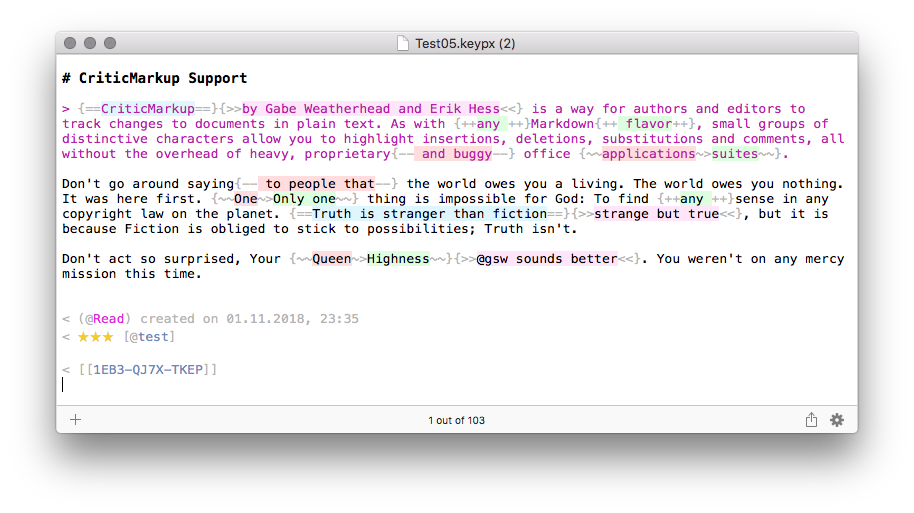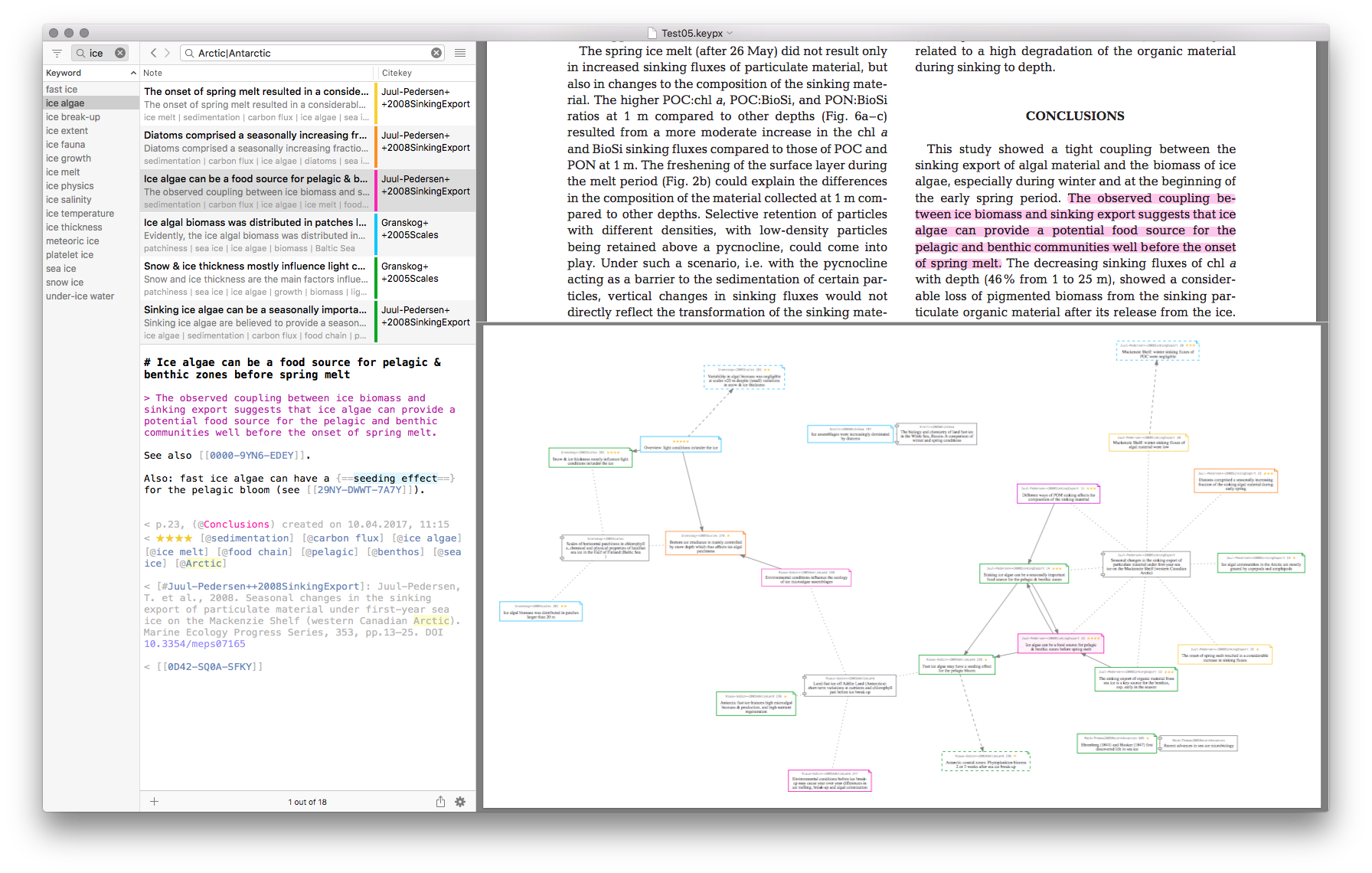The Keypoints app is still in continuous development, and I’ll keep on pushing it forward as much as I can. However, since this is very much a part-time effort, progress is still much slower than I’d like. So I greatly appreciate your patience and continued interest!
During the last months, I’ve mostly focused on fixing major bugs and further polished things, esp. w.r.t. the app's file handling and its scripting API. But I've also been able to add some new features:
I've added basic support for CriticMarkup. CriticMarkup offers a Markdown-like syntax to add highlights & inline comments to plain text, and to mark text additions, deletions and substitutions. Here's a somewhat contrived example:

One of the most visible new features, however, is the built-in graph visualization of notes and their connections. The app's interface now offers a secondary preview which displays a dynamically generated graph of all currently displayed notes and their links between them:

Here's another screenshot with the graph preview enlarged and zoomed in:

In the graph, white boxes represent publications, and dotted lines point to all the currently displayed notes belonging to the publication. Solid lines with arrows depict links between notes, and dashed arrows point to linked notes which currently aren't among the displayed notes. Note card colors represent the note's label color, and the note card of the currently selected note gets a filled background hue.
While you browse, filter & search your notes in the app, this graph gets updated dynamically. But here's the really nice thing: The elements in the graph (more specifically, the note titles & publication titles/citekeys) are clickable, so you can also use the graph to navigate or alter your current collection of notes.
To better illustrate how this works, I've made a 1-minute screencast:
Going forward, this graph visualization feature will get more refinement. And in the distant future, I plan to introduce qualified links, i.e. allow users to specify the relationship type of a link (e.g., "supports", "refutes", "extends", "corrects", "reviews" etc). Linking arrows in the graph could then be annotated with their relationship type.